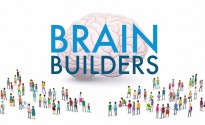The Science
There is a connection between adversity, stress and academic performance. Children often endure stress from adverse experiences, such as exposure to violence, loss of a loved one, racial discrimination and homelessness. Unfortunately, most schools aren’t designed or equipped to address the impact of stress on learning.
Adversity doesn’t just happen to children, it happens inside them.
Stress gets inside their brains and bodies with risks to health and learning. The good news is the brain is malleable. We can use science to address what stress does to children and to schools.
The Science of Brain Development
Click on one of the circles below to begin exploring:
Cytokines and Cortisol
Stress begins with an experience, and this experience is remembered both psychologically and biologically. Humans feel it and relive it for weeks, months, even years.
Under stress, the body releases a cascade of cytokines, cortisol and adrenaline, biochemicals that function as an internal fire alarm. They permeate key brain structures involved in learning, such as the prefrontal cortex, hippocampus and amygdala, which are tightly interconnected and highly sensitive to stress.
The physical experience of frequent and prolonged stress is like being locked in a state of fight-flight-or-freeze, unable to calm down or reset. Children in this state have trouble paying attention, remembering things and getting organized.
Chronic stress can influence the physical structure and function of brain centers that are essential for learning and performance in school, work and life.
Prefrontal Cortex
The prefrontal cortex plays a role in executive function and self-regulation. Under prolonged exposure to stress, signaling between brain centers can be altered, disrupting the prefrontal cortex as it manages the brain’s stress response.
Hippocampus
The hippocampus contributes to learning and memory. It is especially vulnerable to surges of cortisol. When the brain is subjected to prolonged and repeated stress, the hippocampus has difficulty converting working memory into long-term storage of information, thereby interfering with the ability to learn.
Nucleus Accumbens
The nucleus accumbens is associated with motivation, reward and addiction. The experience of persistent, unbuffered stress can dull responsiveness in this area of the brain and lead to greater risk-taking.
Amygdala
The amygdala is essential for emotional regulation and reactivity. It regulates the fear response and sends out distress signals to other parts of the brain. When the amygdala is activated for long periods of time, it can alter signaling to the prefrontal cortex and hippocampus, derailing the learning process.
Stress begins with an experience, and this experience is remembered both psychologically and biologically. Humans feel it and relive it for weeks, months, even years.
Under stress, the body releases a cascade of cytokines, cortisol and adrenaline, biochemicals that function as an internal fire alarm. They permeate key brain structures involved in learning, such as the prefrontal cortex, hippocampus and amygdala, which are tightly interconnected and highly sensitive to stress.
The physical experience of frequent and prolonged stress is like being locked in a state of fight-flight-or-freeze, unable to calm down or reset. Children in this state have trouble paying attention, remembering things and getting organized.
Chronic stress can influence the physical structure and function of brain centers that are essential for learning and performance in school, work and life.
The prefrontal cortex plays a role in executive function and self-regulation. Under prolonged exposure to stress, signaling between brain centers can be altered, disrupting the prefrontal cortex as it manages the brain’s stress response.
The hippocampus contributes to learning and memory. It is especially vulnerable to surges of cortisol. When the brain is subjected to prolonged and repeated stress, the hippocampus has difficulty converting working memory into long-term storage of information, thereby interfering with the ability to learn.
The nucleus accumbens is associated with motivation, reward and addiction. The experience of persistent, unbuffered stress can dull responsiveness in this area of the brain and lead to greater risk-taking.
The amygdala is essential for emotional regulation and reactivity. It regulates the fear response and sends out distress signals to other parts of the brain. When the amygdala is activated for long periods of time, it can alter signaling to the prefrontal cortex and hippocampus, derailing the learning process.
Not all stress is bad − in fact, stress is a necessary and important factor in human development. But chronically high levels of stress, without buffering, derail healthy brain development and impact how children perform in school.
The Antidote to Stress is Trust
Science offers reasons for optimism for schools struggling to educate children facing adversity. Genes are chemical followers − DNA changes in response to the environments and relationships children experience.
Trust is fuel for healthy brain development. When children experience a consistent and supportive connection with a trusted adult, it can alter their brain chemistry. Positive relationships can reduce cortisol, a “stress hormone,” and increase oxytocin, a “love hormone.” But trust doesn’t just happen, it has to be intentionally built. For some children, school may be the only place where they receive this kind of support. When children are in a safe, calm, supportive environment, they can learn the skills and mindsets that are requisite for success in school and in life. By understanding and addressing the impact of adversity on learning, we can put all children on a path toward healthy development and academic achievement.



